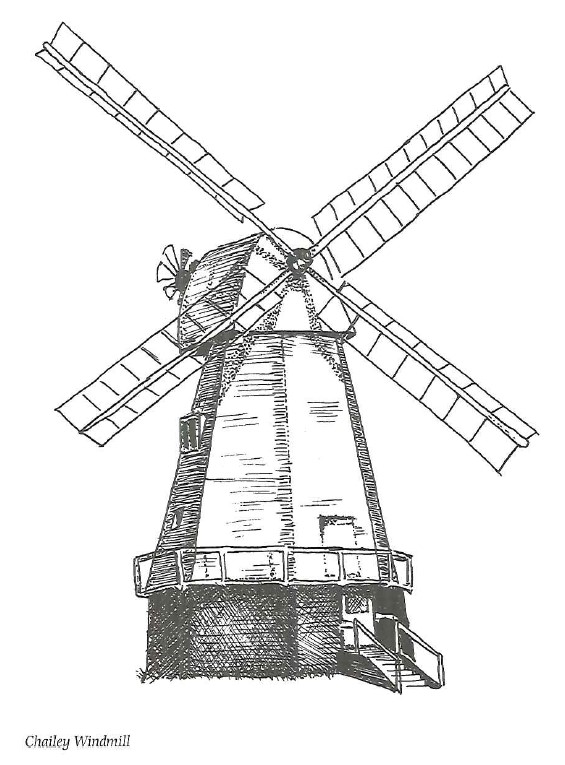Mutations in this pretty hilltop village? The women native to these parts were said to be unusually tall which gave rise to the belief that they were endowed with an extra pair of ribs.
A formidable female who ended her days here was Sophia Louisa Jex-Blake, who single-handedly opened up the medical profession to women. While in the United States in the 1860s she studied medicine and surgery and then sought to qualify in Britain as a doctor. But she found the doors of the London schools closed to her.
She launched the London School of Medicine for Women, within three years the Royal Free Hospital admitted her students to practice and in 1876 an Act was passed in Parliament enabling all medical examining bodies to include women candidates. A year later Sophia was able to put up a sign as the first woman doctor in the country. She passed the last 12 years of a fruitful life in Rotherfield and died in 1912.
The story of the church is an interesting one. In the eighth century Berhtwald, Duke of the South Saxons was a sick man and, unable to find a cure at home, made a pilgrimage to an abbey in France where the bones of three saints were held to work miracles. One of the saints was Dionusius (or Denys) and it was perhaps these particular holy relics that effected Berhtwald’s cure for on his return he founded the church here in AD 792 in honour of St Denys. In his will he threatened grim retribution on anyone attempting to usurp, defraud or curtail his gift.
The link with France that stretches back 1,200 years nearly became stronger when the parish council considered forming a twin-town relationship with St Denys near Paris, but the move foundered because it was decided the two communities were not compatible.
The laws of sanctuary probably saved two murderers from execution when they sought refuge in the church a century ago, but their subsequent ordeal must have been as bad if not worse. In due time the two men were removed from the church by the authorities and in lieu of the gallows they were dressed in sack cloth and made to carry heavy, rough-hewn crosses on a march of some 30 miles to Shoreham for deportation. When they arrived there was no vessel in harbour and the two miscreants were forced to walk into the sea up to their necks every day carrying their crosses until a ship arrived. To have put the crosses down for a second would have meant death.
The Rother rises here, in the cellar of a house called Rotherhurst where a spring bubbles up and begins a 30 mile journey along the Kent border to join the sea at Rye.
The village has a special place in the Sussex Bonfire world. The torchlight processions take place every week over a three month period in towns and villages throughout the county but the season is always launched here at the end of August.
In her memories of childhood in Rotherfield in the 1920s Mrs Dorothy Martin maintained that the children never did anything naughtier than pinch the odd apple. But she did recall that the district nurse, Nurse Ball, kept a parrot for company at her house in Church Road and the local boys managed to teach it to swear one summer by shouting through the open window at the bird. Nurse Ball cottoned on and kept her windows firmly closed after that.
Another feathered friend with a colourful vocabulary was the mynah bird who lived in the bar of The George until his owners moved on in recent years.
Sounds of a stranger kind were heard at The King’s Arms in the early 1950s when the great Maurice Tate, one-time Sussex and England cricketer, was the landlord. Footsteps were heard running heavily and hurriedly up the stairs and along a passageway. No ghostly manifestation was ever seen and the sounds only occurred during the month of June. They were first noticed in 1952 and continued, regular as clockwork, for two more years. There was quite a gathering at the pub throughout the June of 1955 as everyone assembled to hear the ghost – but the stair-climber proved coy and would not perform for the audience, either then or ever since.
One of the bedrooms at The King’s Arms was labelled the special room’ by the Tate family. It was here that Maurice felt someone touch him so deliberately he thought it was one of the children and asked: “What do you want?’ Of course, he was quite alone.
The pre-war annual Sunday School treat from the long-gone village station (when trains arrived the porter always cried ‘Rotherfield, Rotherfield and Mark Cross’ because Rotherfield was twice as important) was a thrill never to be forgotten, according to the village elders. Whole families gathered to catch the train to Eastbourne where a picnic lunch was enjoyed on the beach. After swimming and games, everyone formed a crocodile to march to a local church hall where sandwiches, sticky buns, jelly and orange squash were consumed before the sleepy journey back up-country.
